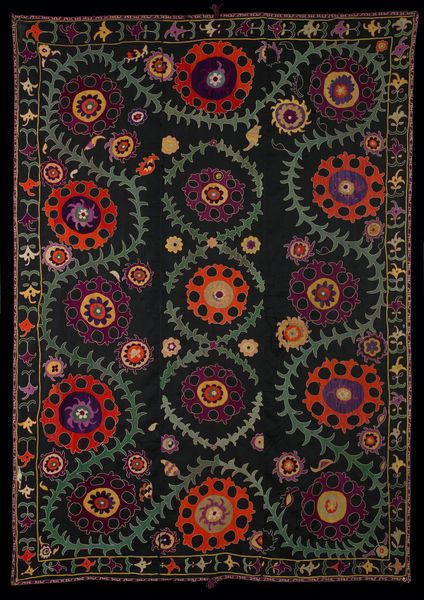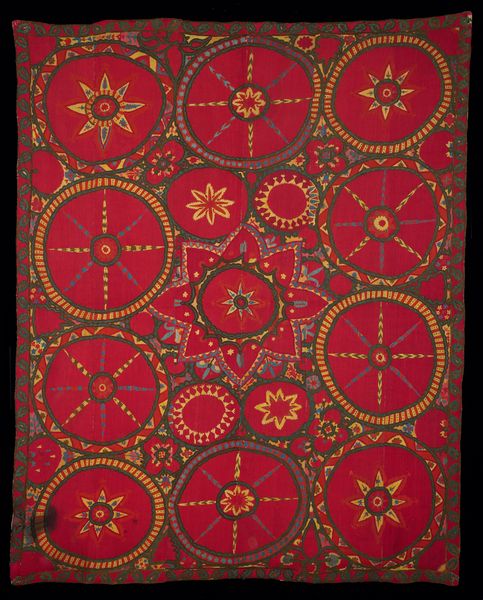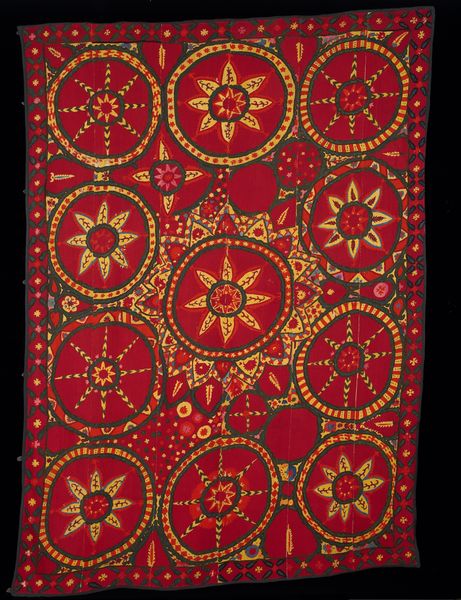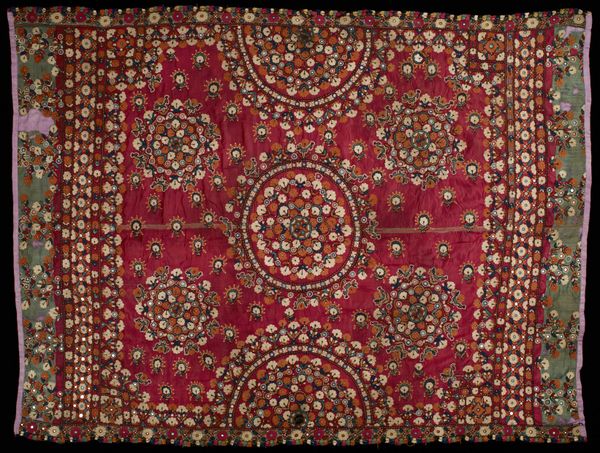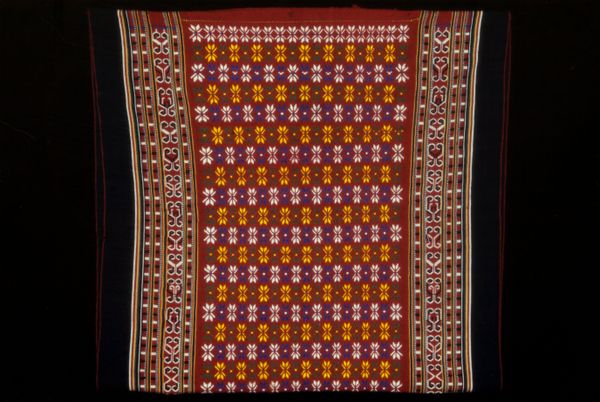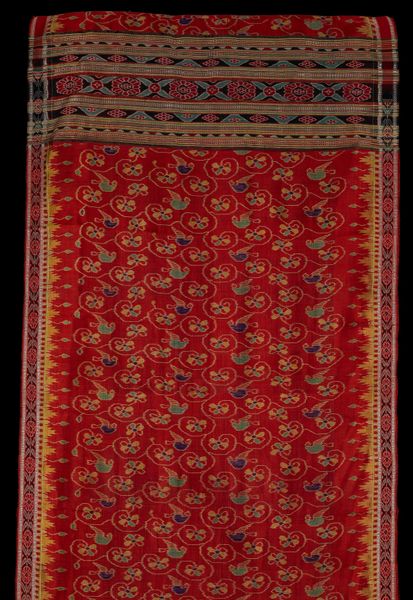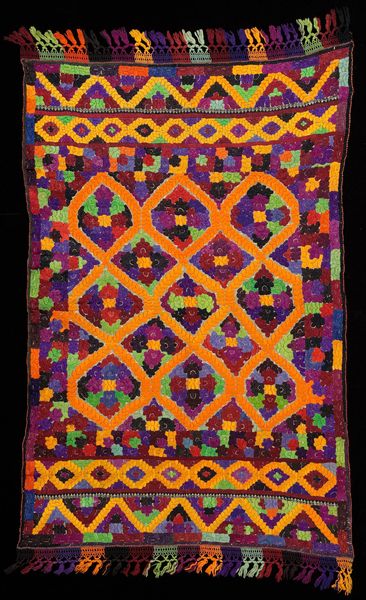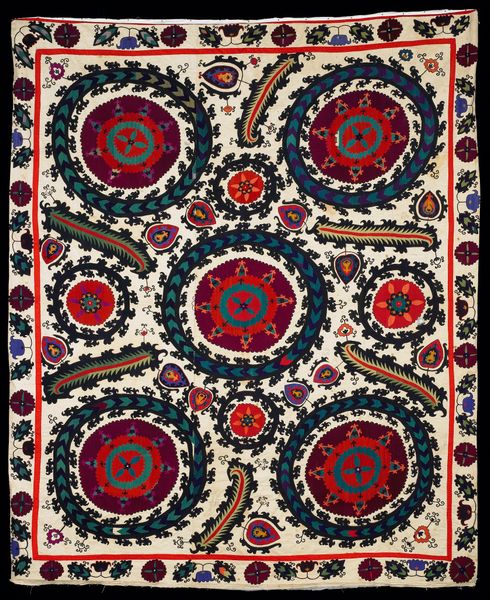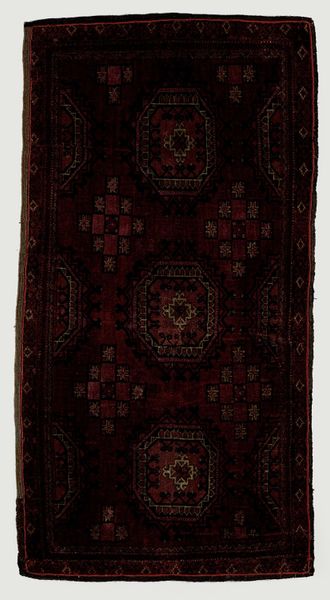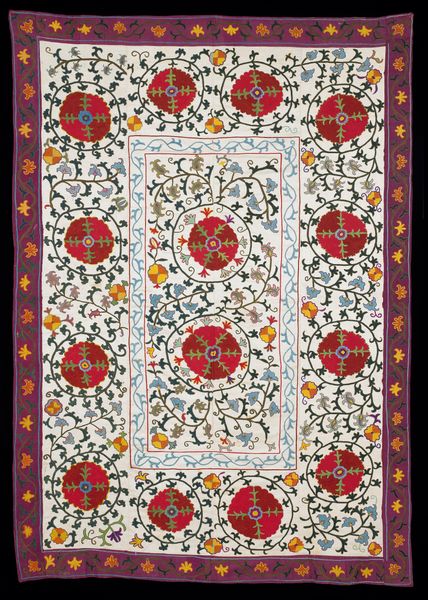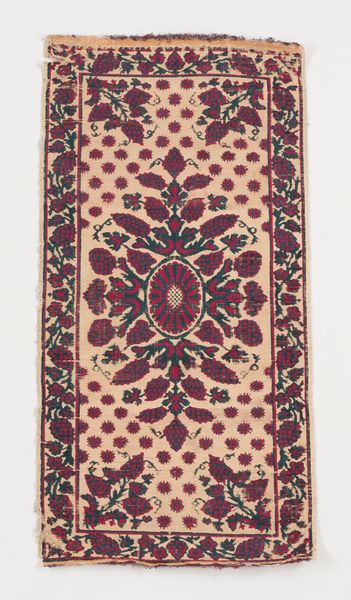
fibre-art, weaving, textile, cotton
#
pattern heavy
#
fibre-art
#
pattern
#
asian-art
#
weaving
#
textile
#
geometric pattern
#
ethnic pattern
#
organic pattern
#
geometric
#
cotton
Copyright: Public Domain
Curator: Here we have a striking example of a suzani, a type of embroidered textile, made sometime between 1920 and 1930. It is currently held in the collection of the Minneapolis Institute of Art. The medium includes weaving with cotton. Editor: Wow, my first thought is that the colors just leap out at you—reds, golds, and whites against that dark backdrop. It gives off this vibrant, almost celebratory mood, but also quite dense and patterned. Curator: Indeed, that density speaks to the process of its creation. Suzanis are traditionally made by women, often within families, with different women contributing different skills. The division of labor is quite interesting; some would dye the threads, others might do the actual embroidery, thus turning a functional piece of fabric into a decorative item charged with cultural significance. Editor: Exactly! These repeating floral and geometric patterns carry so much symbolic weight. For example, many scholars believe that the pomegranate motifs often seen in suzanis, represent fertility and abundance, while the circular patterns signify the sun, a life-giving force. What meanings might be layered within the textile of red, white and gold designs, too? Curator: Absolutely. Considering the labor that went into each piece and the communal effort involved in producing a single work challenges the idea of the solitary artist. The choice of materials too, locally sourced cotton and natural dyes, highlights an intimate connection between the people and their environment. Editor: Right, it’s not just decoration, is it? Every aspect of this, from the choice of imagery to its placement, conveys specific messages tied to cultural beliefs and rituals. It also suggests a certain kind of continuity. Women were essentially recording and transmitting shared knowledge, values, and expectations through visual symbolism and the production of such a unique textile art. Curator: The concept of cultural heritage comes to mind here, but what I keep returning to is the amount of human interaction woven into these objects. Not only during its production but through use; given how suzanis are presented at important occasions to decorate space and to add symbolic weight to an event. The suzani literally weaves these traditions together for many future generations. Editor: Agreed! Seeing it in this new light, there’s so much more going on in terms of community expression, beliefs and storytelling than meets the casual eye, but once these meanings have been found, it's difficult to view this artwork as simply threads and material. Curator: Very true, every viewing will remind us to question the social, familial, and cultural circumstances of textile work!
Comments
No comments
Be the first to comment and join the conversation on the ultimate creative platform.
